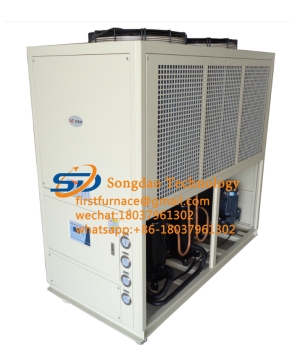- 13
- Nov
How to deal with the small temperature difference between the inlet and outlet of the industrial chiller?
How to deal with the small temperature difference between the inlet and outlet of the industrial chiller?
The common chillers in the industry now include: air-cooled chillers, water-cooled chillers, screw chillers, and screw chillers. After purchasing an industrial chiller, learn more about the operation of the equipment. Correct operation is a prerequisite to ensure the smooth operation of the equipment.
How to deal with the small temperature difference between the inlet and outlet of the industrial chiller? What are the main reasons for the small temperature difference between inlet and outlet water? Follow the chiller manufacturers to take a look!
The main reasons for the small temperature difference between the inlet and outlet water temperature of industrial chillers are
1. The output cooling capacity of the industrial chiller is small, such as the failure of the industrial chiller itself or insufficient load, etc., which can be preliminarily judged by observing the operating current of the industrial chiller;
2. The heat exchange effect of industrial chillers may not be good. For example, if the heat exchange tube is severely scaled, it will affect the heat transfer of the refrigerator. It can be judged by observing the heat transfer temperature difference between the water temperature and the evaporation temperature;
3. Se o fluxo de água do chiller industrial for muito grande, pode ser avaliado observando a diferença de pressão da água entre o interior e o exterior do evaporador e a corrente de operação da bomba;
4. Depois de eliminar os problemas acima de chillers industriais, considere se o sensor ou termômetro está impreciso;
Como garantir o efeito de resfriamento estável de chillers industriais? Os seguintes pontos devem ser observados:
1. Verifique regularmente os compressores dos chillers industriais;
2. Limpe regularmente o condensador e o evaporador do chiller de água industrial;
3. Verifique regularmente várias válvulas de chillers industriais;
4. Substitua regularmente o óleo lubrificante de chillers industriais;
- Substitua regularmente o filtro seco do chiller industrial;

